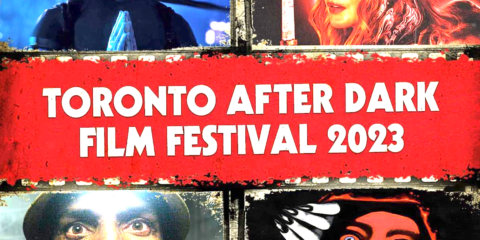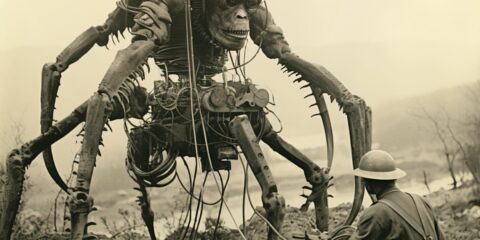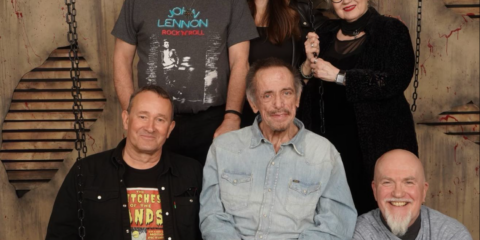
After a year hiatus, Toronto After Dark Film Festival is back! It’s so bittersweet with the untimely passing of founder Adam Lopez. I’m sure he would want it to continue. He loved his cinemaniacs. I’m proud to be one. Through this festival, Adam reignited my love of genre cinema. Thank you Adam!
This annual exhibition of cult, horror, and science fiction movies in Toronto, Ontario, Canada. A wide range of new works from Asia, Europe, and North America are among the feature-length and short films that premiered at the festival. The first Toronto After Dark Film Festival was held from October 20 to 24, 2006. In Toronto, Ontario, Canada, at the Bloor Cinema, the first festival was held.
It’s a small enough film festival that I get the All-Access pass and see all the films.
Here the 2025 film lineup:
Queens Of The Dead (2025) 
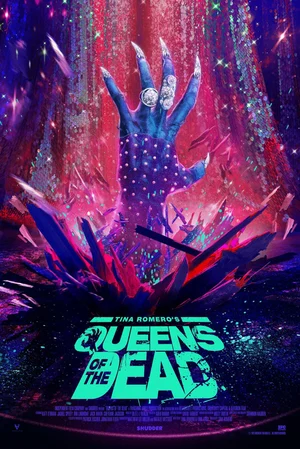
Queens of the Dead unfolds during a wild Easter-night drag show in a Bushwick warehouse, where the night begins with typical chaos: a stressed promoter scrambling over canceled acts, rivalries between performers, and an anxious scramble to keep the show afloat. The venue fills with queens, club kids, and partygoers, each wrapped up in their own drama, but the tension shifts when strange reports filter in from the city—people are attacking each other, the hospitals are overwhelmed, and something terrifying is spreading fast. Before long, the party is under siege by zombies, turning sequins and stilettos into survival gear.
As the horde crashes into the space, the mismatched group is forced to put aside grudges and come together. Dre, the promoter, struggles with both her fractured trust in an old friend and the urgent need to protect her wife, Lizzy, who has just arrived from the chaos outside. Performers turn their stage skills into survival tools: costumes become camouflage, props are weaponized, and showmanship becomes a tactic to outwit the undead. At the same time, simmering conflicts—about loyalty, creative betrayal, and respect within the queer community—bubble up, giving the fight an emotional charge.
The night swings between carnage and camp, with moments of humor breaking through the horror as the survivors navigate whether to barricade themselves inside or attempt escape. Some find unexpected courage, while others fall victim to the rising tide of zombies. Amid bloodshed and spectacle, the story highlights resilience, chosen family, and the power of performance, as the warehouse transforms into both a battlefield and a stage where survival and self-expression collide.
Primate (2025) 
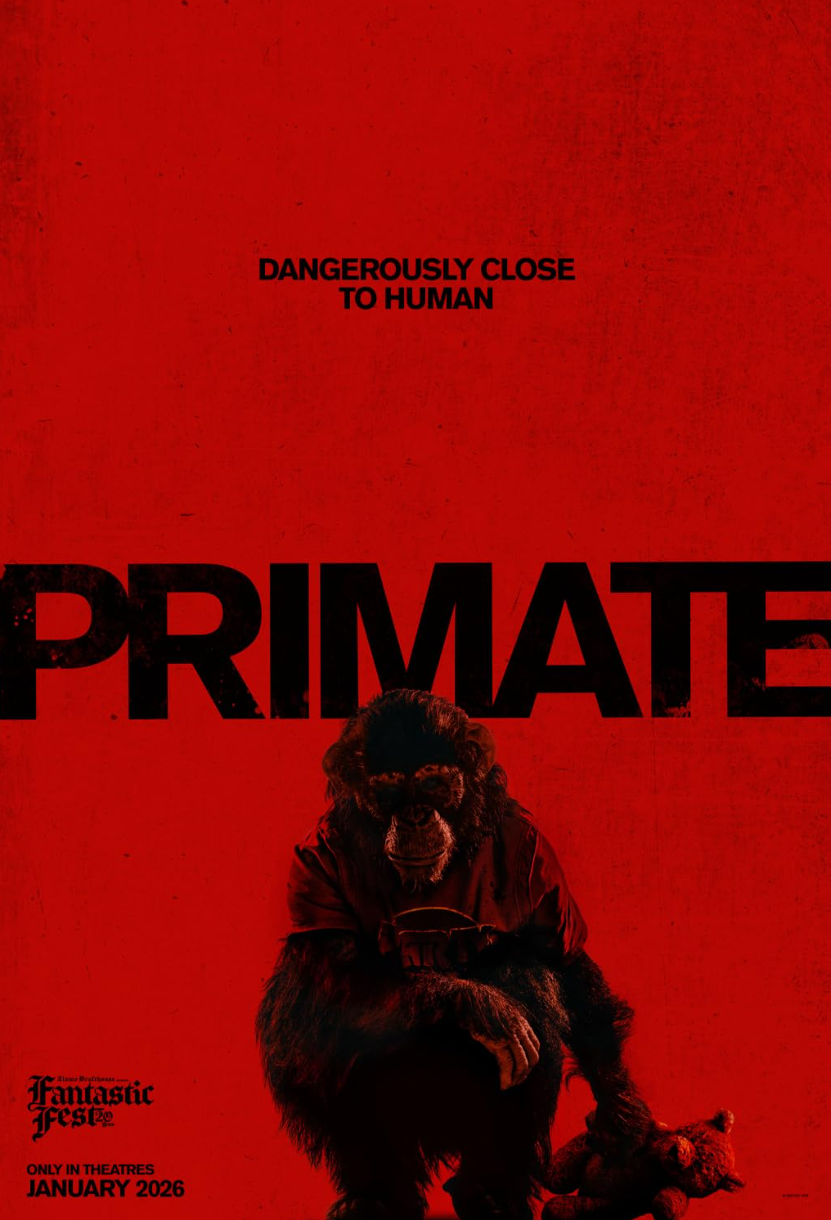
Lucy returns home from college for the summer and reconnects with her family, including their pet chimpanzee, Ben. To celebrate being back, she and her friends plan a pool party, taking advantage of the family’s spacious house while her father is called away. The group includes close friends, siblings, and others who drift in as the house fills with laughter, music, and lighthearted warmth.
Unknown to them, Ben is exposed to rabies via a bite from another animal before (or during) the gathering. Seemingly small at first, the infection takes hold quickly. The once-gentle ape becomes erratic and aggressive, its behavior shifting from playful to dangerous in a shocking way. As Ben’s condition spirals, Lucy and her friends come to realize that their familiar, beloved pet is turning into a lethal threat.
Ben attacks, making escape difficult. The group finds themselves trapped, with the pool area as their only refuge. They barricade themselves, using whatever they can find to fortify their position, while trying to maintain a semblance of calm. Tensions rise among the friends—old insecurities, sibling dynamics, moments of panic, fear, and guilt test their relationships. Some try to reason with Ben, others look for practical escape routes, and some prepare for the worst.
As the night deepens, Ben’s attacks grow more feral and indiscriminate, forcing the survivors to improvise strategies to stay alive. They attempt distractions, use the layout of the house to their advantage, and try to stay together, but not all will succeed. In the chaos, Lucy must come face to face with her attachments—to her home, her family, and the being she once loved—while doing everything she can to save those she came back to protect.
Hold the Fort (2025) 
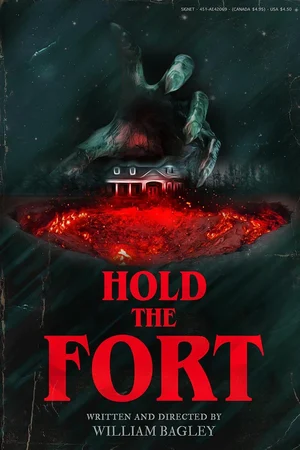
Lucas and Jenny are a young couple who think they’ve found their slice of paradise after moving out of the city and into a neatly manicured suburban neighborhood. Lucas is excited by the idea of lawn care, white picket fences, and belonging, while Jenny is more cautious about what they’ve signed up for, especially once they discover they’re part of a homeowners association (HOA) with a lot of rules—and dues. The HOA president, Jerry, extends a friendly invitation to Lucas and Jenny to participate in the community’s annual Equinox party at the neighborhood clubhouse. Reluctantly, they go.
At the party, Jenny and Lucas see familiar neighbors, introductions are made, and the evening atmosphere seems upbeat—until things turn disturbingly surreal. A banner at the clubhouse greets guests with chilling warning (“Welcome to Equinox. Please don’t die”), and Jerry reveals what Lucas should have noticed in the fine print of their property contract: every Equinox, a portal opens that allows monsters from another realm to invade the neighborhood. The HOA doubles as a defense force; the residents are obligated to protect their community.
What begins as disbelief quickly becomes chaos as mythic beasts and hellish creatures — witches, werewolves, flying bats, kung-fu zombies, and other grotesque supernatural attackers — spill through the portal. The residents scramble to respond. Among them is McScruffy, a heavily armed hero figure who is expected to lead the battle (though his commitment/usefulness fluctuates). Lucas and Jenny must adapt fast—with makeshift weapons, allies among eccentric neighbors, and sheer will—to survive the long night.
Jenny’s skepticism and Lucas’s enthusiasm are both tested. Under pressure, old insecurities and differences arise: how much risk they’re willing to take, how much they’re willing to believe, and whether “moving to suburbia” was worth the trade-off. As the monster hordes attack, the residents fight back with ingenuity and bloodshed. Scenes alternately horrifying and absurd unfold: surprise jump scares, over-the-top creature mayhem, and moments when heroism emerges in unlikely characters.
Lucas, pushed to the brink, grows beyond his “newcomer” status. He has to decide whether he’ll run, hide, or stand and help protect what could now be his home. Through the carnage, alliances form, sacrifices are made, and the neighborhood becomes a battleground where suburban aesthetics and community expectations meet raw survival. In the end, the battle tests not just physical strength, but emotional bonds, and raises questions about what price peace and “home” are truly worth.
On Gallows Hill (2025) 
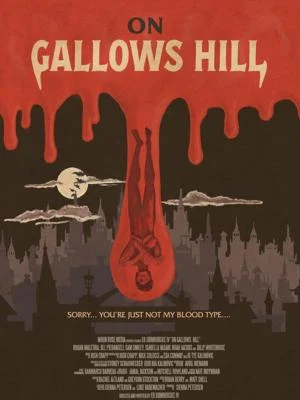
A college student, typical and ambitious, visits a remote family estate after being bitten by a mysterious creature. Over the following days, he begins to feel strange—theyird cravings, nightmares, a loss of control. One night, he encounters a hermit-like figure in the woods who warns him that his affliction is far more than an ordinary infection.
Soon, he discovers there is a coven of old-world vampires living secretly nearby, steeped in ancient rites and hidden in the shadows of the forested hills. They see something unique in him—not just the new bite, but a spark of something they’ve long awaited. Among them is one who takes a special interest, leading to a complex, forbidden romance that both terrifies and attracts the student.
As he becomes more intertwined with the coven, he uncovers dark secrets about their history: betrayals, blood oaths, and a decades-long conflict with hunters who once nearly destroyed them. The student is torn between the human world he still feels tied to (friends, school, promises) and this new, seductive existence that promises power, immortality, and revelation—but at a price.
Physical transformations begin: heightened senses, sensitivity to daylight, internal torment, and guilt over what he’s already done (or may soon be forced to do). He is forced to make choices—whether to embrace the vampire within, reject it, or attempt to walk a middle path—all while dangerous forces, both supernatural and mortal, close in. The story builds tension through gothic atmosphere, moral conflict, visceral horror, and emotional stakes, as the student fights not only for survival, but for his soul.
Reflection in a Dead Diamond (2025) 
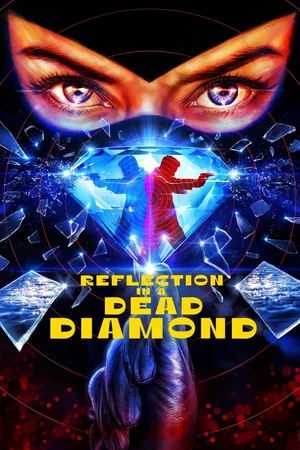
A once-daring spy named John D., now in his seventies, lives a quiet, luxurious retirement in a grand hotel on the French Riviera. His days are marked by solitude and routine, but everything changes when a young, mysterious woman moves in next door. She stirs memories of his glamorous, dangerous past in the 1960s, the golden era when espionage meant seduction, betrayal, and high stakes.
Soon after she appears, she vanishes without a trace. Her disappearance becomes a trigger—John begins slipping between past and present. Flashbacks—or perhaps fantasies—resurface: secret missions, shadowy enemies, diamond heists, betrayals, and femme fatales. The line between recollection and delusion grows thinner. John suspects that old adversaries—people he once thought defeated or long gone—may be circling back into his life.
As he digs deeper, he revisits people from his youth: dangerous villains, elusive lovers, flamboyant agents, and mysterious women whose very identities seem fluid. These figures intersect in strange, often violent ways. Scenes show John at the height of his power, but also moments of inner torment: regret, obsession, guilt. The luxury around him—sea views, designer interiors, elegant hotels—contrast sharply with his inner disquiet.
In parallel, John’s present life becomes infused with the motifs of his spy life: diamonds, mirrors, masked identities, and betrayal. Clues about the neighbor’s disappearance seem to echo scenes from spy novels or pulp comics. Objects and people shift roles—what he sees may not be real, or may be more than what they seem.
With tension mounting, John wrestles with the possibility that his memories have twisted him, that perhaps the past never truly left him. As the mystery of the woman’s disappearance unravels, John’s struggle becomes not just to find answers, but to reckon with who he once was—and what he has become. The narrative crescendos through visual excess, fragmented storytelling, and the collision of glamour and violence, memory and obsession.
The Forbidden City (2025) 
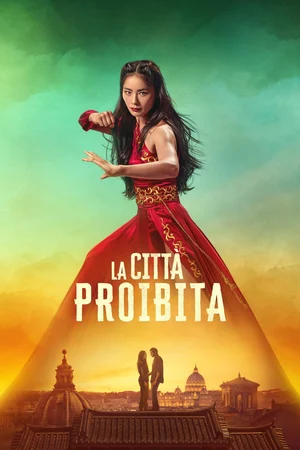
Mei, a young woman from China, arrives in Rome driven by a desperate mission—to find her missing sister, Yun, who left home under the constraints of the one-child policy and vanished after moving abroad. Meanwhile, Marcello is struggling to keep his family’s trattoria afloat in the Piazza Vittorio, a vibrant, immigrant-rich neighborhood, while living with the shadow of his father’s disappearance. Their lives intersect when Mei’s search leads her to the restaurant world; she believes that Marcello’s father and Yun may be entangled in the same web of secrets.
As Mei pushes deeper into the underbelly of the city, she uncovers criminal operations tied to prostitution, illegal trades, and corruption. She crosses paths with dangerous figures, including crime bosses and exploitative gangs, who threaten everyone around her. Marcello, initially reluctant, is drawn in by Mei’s determination, guilt over his family’s past, and a growing sense that helping her might also unearth truths about his father.
Together, they navigate both literal fight scenes—Mei using martial arts skills, stealth, and courage—and moral/ethical battles, as they confront betrayal, lies, and the complicity of institutions. Along the way, romance blossoms between Mei and Marcello, complicating their mission but also giving them strength. As the danger escalates, loyalties are tested, and personal scars—family abandonment, cultural displacement, and identity crises—come to the fore.
In Rome’s streets, restaurants, kitchens and shadowed back-alleys, the quest becomes not just about locating lost loved ones, but also about reclaiming power, truth, and home. The climax forces both Mei and Marcello to make a stand—physically and emotionally—against those who have hidden the past, and to reckon with what they’re willing to sacrifice for justice and belonging.
This Is Not a Test (2025) 
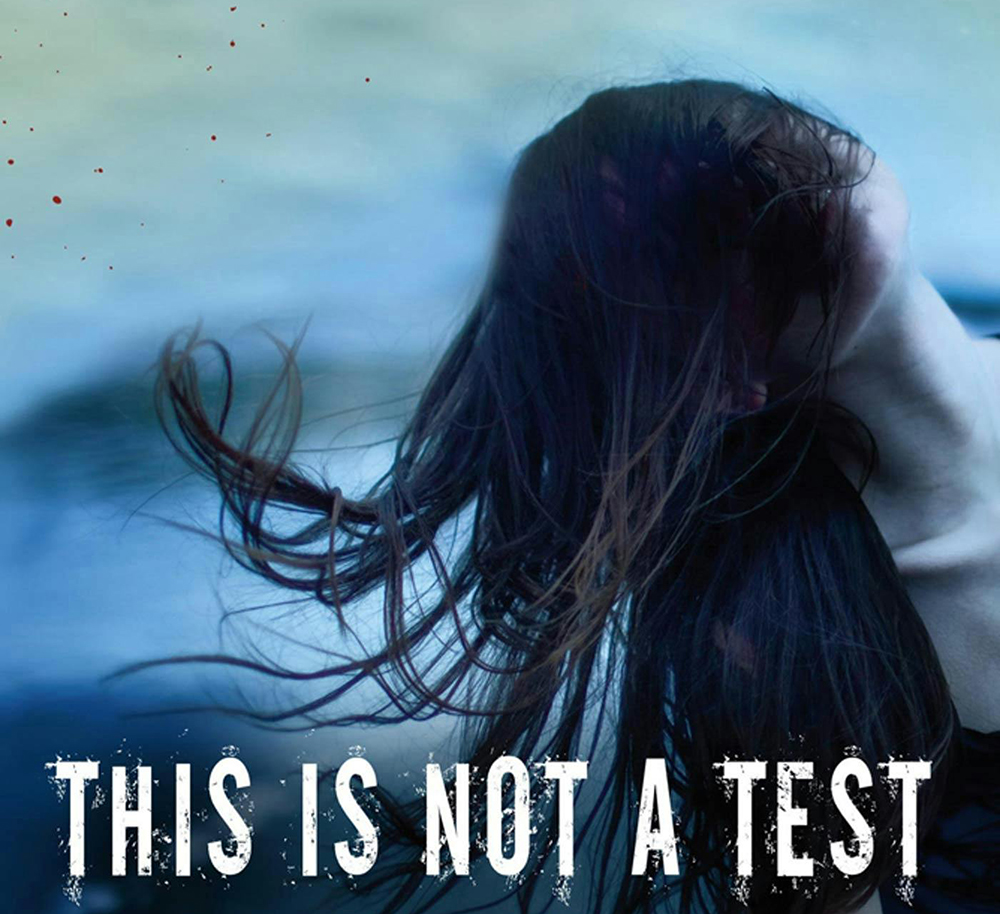
It opens near the start of a zombie apocalypse in the mid-’90s. Sloane, a high school student already feeling disconnected and carrying the weight of personal struggles, watches the collapse of normal life as the infected begin overrunning the world. After chaos erupts outside, she and four other students find themselves forced to take refuge in their high school building, barricading themselves inside to survive.
Inside the school, the atmosphere is tense. Supplies are scarce, fear is high, and each person reacts differently—some are paralyzed by anxiety, others try to organize, and some lash out in despair or anger. Over time, Sloane observes how those who still want to live fight not just the external threat of infection, but also internal conflicts: guilt, grief, regret, and the pull of giving up. Personal histories, secrets, and relationships between the students come to light, revealing what each is holding on to—and what they might lose.
As danger from the infected pressing on them escalates, Sloane begins to shift. What started as passive survival turns into active decision-making. She wrestles with her own doubts: about whether life in this changed world is worth saving, what moral compromises are acceptable, and what strength she can find in herself. She leads efforts to fortify entrances, ration food, and try to signal for help, while trying to keep hope alive for everyone.
Amid the horror and desperation, there are moments of human connection: confessions, anger, moments of humor, memories of the world before it all fell apart. The school becomes a crucible: not just for holding out against the zombies, but for growing, discovering character, and redefining what it means to live when the world has changed forever.
Sisu Road to Revenge (2025) 
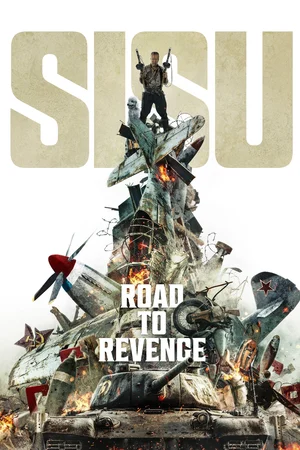
In the aftermath of World War II, Aatami Korpi, the indomitable Finnish ex-soldier known as “the man who refuses to die,” returns to Soviet-occupied Karelia. There, he dismantles the house where his family was brutally murdered during the war, loading the materials onto a truck with the intent to rebuild it elsewhere in their honor. However, his actions attract the attention of the Red Army, leading to the release of Igor Draganov, the very commander responsible for the massacre of Aatami’s family. Draganov is dispatched with a singular mission: to eliminate Aatami and put an end to his legendary resilience.
What ensues is a relentless, cross-country chase filled with inventive and over-the-top action sequences. Aatami’s journey becomes a battle not only for survival but also for justice, as he confronts the horrors of his past and the brutal forces determined to finish what they started. The film showcases a series of clever, high-octane set pieces, blending intense combat with moments of dark humor and cinematic flair.
Silver Screamers (2025) 
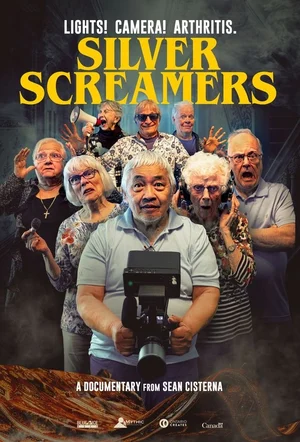
Silver Screamers is a Canadian documentary that follows a group of spirited senior citizens as they embark on an extraordinary adventure far outside their comfort zones. Led by filmmaker Sean Cisterna, the seniors set out to make their own horror film, stepping into the world of filmmaking with humor, heart, and resilience. The documentary captures their journey, showcasing their creativity, camaraderie, and the joy they find in embracing new challenges. Through their efforts, they prove that creativity knows no age, and that it’s never too late to pursue one’s passions.
I Fell in Love with a Z-Grade Director in Brooklyn (2025) 
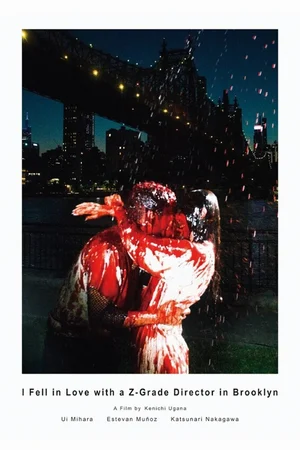
Shina Mizuhara, a renowned Japanese movie star, arrives in New York City with her boyfriend, Ren, seeking a fresh start after losing her passion for acting. However, their relationship quickly unravels, leaving Shina stranded in the city without money or a phone. In her vulnerable state, she encounters Jack, an enthusiastic and unconventional indie filmmaker, who offers her a role in his low-budget horror film, Love vs. Death, and a place to stay for the week.
Despite their language barrier and cultural differences, Shina agrees to join Jack’s project, leading to an unexpected creative journey. As they work together, Shina begins to rediscover her love for cinema and her own identity, while Jack’s passion for filmmaking reignites her own. The film unfolds as a heartfelt exploration of artistic collaboration, personal growth, and the transformative power of cinema.


